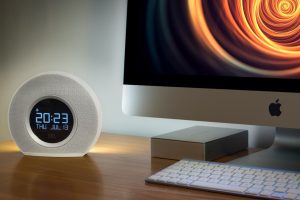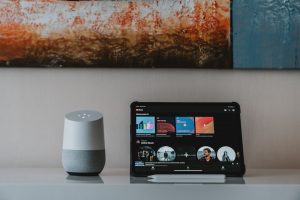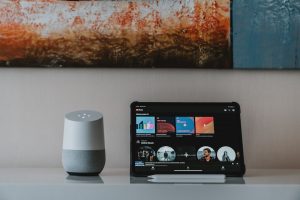Smart Home Devices for Seniors: Safety vs. Ease of Use
Discover the top smart home devices that balance safety and ease of use for seniors. Enhance aging in place with innovative solutions today.
Introduction to Aging in Place Technology
Understanding Aging in Place
Aging in place refers to the ability of older adults to live independently and comfortably in their own homes for as long as possible. This concept emphasizes the importance of maintaining autonomy and quality of life without the need to move to assisted living facilities or nursing homes.
As the global population ages, the demand for solutions that facilitate aging in place is increasing.
The Role of Smart Home Devices
Smart home devices play a crucial role in supporting aging in place by offering a range of technologies designed to enhance safety, convenience, and connectivity for older adults. These devices can help monitor health, automate daily tasks, and provide emergency assistance, thereby reducing the need for constant supervision and allowing seniors to maintain their independence.
Key Technologies in Aging in Place
Several key technologies are integral to aging in place.
Smart sensors and home automation systems can monitor movement and environmental conditions, alerting caregivers or family members if something unusual is detected. Voice-activated assistants, such as Amazon Alexa or Google Assistant, allow seniors to control devices, set reminders, and communicate hands-free.
Wearable health monitors track vital signs and activity levels, sending data to healthcare providers for ongoing assessment.
Additionally, smart security systems enhance safety by providing surveillance and alerting users to potential intrusions or emergencies.
Benefits of Aging in Place Technology
The benefits of incorporating smart home devices into aging in place strategies are numerous. These technologies not only improve the quality of life for seniors by offering greater independence and peace of mind but also ease the burden on caregivers.
By enabling remote monitoring and communication, family members and healthcare providers can stay informed and respond quickly to any issues.
Furthermore, aging in place technology can be cost-effective compared to traditional care facilities, allowing seniors to remain in their familiar environments while receiving the support they need.
Top Smart Home Devices for Seniors
Smart Speakers and Voice Assistants
Smart speakers equipped with voice assistants like Amazon Alexa, Google Assistant, or Apple Siri can significantly enhance the daily lives of seniors. These devices allow for hands-free control of various smart home gadgets, making it easier for seniors to manage their environment.
Voice commands can be used to play music, set reminders for medication, or even call family members, providing both convenience and a sense of independence.
Smart Lighting Systems
Smart lighting systems are a practical addition to any senior’s home. These systems can be programmed to turn lights on and off at specific times, reducing the risk of falls during nighttime trips to the bathroom.
Additionally, smart bulbs can be controlled via smartphone apps or voice commands, allowing seniors to adjust lighting without needing to get up from their seat.
Smart Thermostats
Maintaining a comfortable home temperature is crucial for seniors, and smart thermostats offer an efficient solution. These devices learn the user’s schedule and preferences, automatically adjusting the temperature to optimal levels.
Seniors can also control the thermostat remotely through a smartphone, ensuring their home is always at a comfortable temperature without the need for manual adjustments.
Smart Security Systems
Safety is a top priority for seniors living independently, and smart security systems provide peace of mind. These systems often include features such as video doorbells, motion sensors, and smart locks.
Video doorbells allow seniors to see who is at the door without opening it, while smart locks enable secure, keyless entry. Motion sensors can alert homeowners to unusual activity, adding an extra layer of security.
Medical Alert Systems
Medical alert systems have evolved with smart technology, offering seniors an added layer of safety.
These devices can detect falls and immediately notify emergency services or designated contacts. Some systems also offer health monitoring features, such as tracking heart rate or blood pressure, providing valuable data for healthcare providers and family members.
Benefits of Smart Home Technology
Enhanced Safety and Security
Smart home technology offers enhanced safety and security features that are particularly beneficial for seniors aging in place.
Devices such as smart locks, video doorbells, and security cameras allow for real-time monitoring and control over home access. These devices can send alerts directly to a smartphone, providing peace of mind for both the elderly and their family members.
Additionally, smart smoke detectors and carbon monoxide alarms can automatically alert emergency services in case of a hazard, ensuring timely intervention and reducing the risk of accidents.
Improved Accessibility
Smart home devices can significantly improve accessibility for seniors, making daily tasks easier and more manageable.
Voice-activated assistants, like Amazon Alexa or Google Assistant, enable hands-free control over various home functions, such as adjusting thermostats, controlling lights, or playing music. This technology reduces the need for physical interaction with devices, which can be a challenge for those with mobility issues.
Moreover, smart lighting systems can be programmed to turn on and off at specific times or be controlled remotely, ensuring well-lit environments that prevent falls and enhance overall safety.
Health Monitoring and Assistance
Health monitoring is a critical aspect of aging in place, and smart home technology provides innovative solutions to support this need.
Wearable devices and smart health monitors can track vital signs, activity levels, and medication schedules. These devices can send reminders and alerts to both the user and caregivers, ensuring that health routines are maintained consistently.
Furthermore, smart home systems can integrate with telehealth services, allowing seniors to have virtual consultations with healthcare professionals without leaving their homes, thus promoting continuous health management.
Energy Efficiency and Cost Savings
Smart home technology can lead to significant energy savings, which is beneficial for seniors living on a fixed income.
Smart thermostats learn user preferences and adjust heating and cooling systems accordingly, optimizing energy use and reducing utility bills. Similarly, smart plugs and energy-efficient appliances help monitor and control energy consumption, further contributing to cost savings.
By automating these processes, seniors can enjoy a comfortable living environment without the stress of managing complex systems manually.
Considerations When Choosing Smart Devices
Ease of Use
When selecting smart devices for aging in place, ease of use is paramount.
Devices should have intuitive interfaces that are simple to navigate, even for those who may not be tech-savvy. Look for products with large, clear displays and straightforward controls.
Voice-activated devices can also be beneficial, allowing users to operate them without needing to physically interact with the device.
Compatibility
Compatibility is another crucial factor. Ensure that the smart devices you choose can seamlessly integrate with existing systems and other smart devices in the home.
This includes checking if they are compatible with popular smart home ecosystems like Amazon Alexa, Google Assistant, or Apple HomeKit. Compatibility ensures that all devices can communicate with each other, providing a cohesive and efficient user experience.
Security and Privacy
Security and privacy are significant concerns when incorporating smart devices into the home.
Choose devices from reputable manufacturers that offer robust security features, such as end-to-end encryption and regular software updates. Additionally, review the privacy policies to understand how your data will be used and stored.
Opt for devices that provide transparency and control over personal information.
Functionality and Features
Consider the specific needs of the individual when evaluating the functionality and features of smart devices. For aging individuals, devices that offer health monitoring, emergency alerts, and medication reminders can be particularly valuable.
Evaluate whether the device’s features align with the user’s lifestyle and requirements to ensure it provides meaningful benefits.
Cost and Value
While cost is always a consideration, it’s important to weigh the price against the value and benefits the device offers. More expensive devices may provide advanced features and better reliability, which can be crucial for aging in place.
However, there are also budget-friendly options that offer essential functionalities without compromising quality. Assess the long-term value and potential savings the device could provide, such as reducing the need for in-person caregiving.
FAQ
Q1: Who should consider buying smart home devices for aging in place?
A1: Smart home devices designed for aging in place are ideal for older adults who wish to maintain their independence while ensuring their safety and comfort at home. These devices are also beneficial for family members or caregivers who want to monitor and support their loved ones remotely. Additionally, individuals with mobility challenges or those recovering from surgery may find these devices helpful in managing daily tasks more easily.
Q2: Are these smart home devices compatible with other devices or software?
A2: Most smart home devices for aging in place are designed to be compatible with popular smart home ecosystems like Amazon Alexa, Google Assistant, and Apple HomeKit. This compatibility allows users to integrate them seamlessly with other smart devices, such as smart speakers, lights, and thermostats, for a cohesive and convenient home automation experience. Before purchasing, it’s important to check the specific compatibility requirements of each device to ensure they work with your existing setup.
Q3: When is the right time to upgrade or consider better alternatives for smart home devices?
A3: The right time to upgrade your smart home devices depends on several factors, including the age and functionality of your current devices, advancements in technology, and your evolving needs. If your devices are outdated, lack essential features, or are no longer supported by manufacturers, it might be time to explore newer models. Additionally, if your needs have changed—such as requiring more advanced health monitoring or enhanced security features—consider looking for alternatives that better meet your current requirements. Regularly reviewing the latest offerings in the market can help you make informed decisions about upgrading.
Takeaway
Ready to make an informed decision on your next tech purchase? Dive into hands-on product reviews to get a real feel for the gadgets you’re eyeing. Compare specs side by side to see which one truly fits your needs. Still have questions? Visit the official site for all the nitty-gritty details. Your perfect tech match is just a click away!











Comments